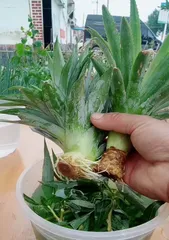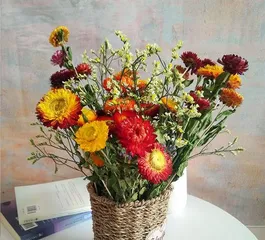Pineapple Daisy is a plant of great ornamental value, with sunflower-like flowers in a riot of colors, making it an indispensable decorative plant in gardens. However, how can these flowers remain vibrant and colorful? Water-cultivating the Pineapple Daisy is a relatively simple and effective method. This article will provide a comprehensive guide to the care techniques for Pineapple Daisy, from watering to fertilization.

Preparation: Choosing the Right Potting Soil and Pot
Before starting to water-cultivate your Pineapple Daisy, it's necessary to select the appropriate potting soil and pot. Generally, potting soil with good drainage and high fertility is preferred, while a wider and shallower pot is ideal.
Watering Techniques: Maintaining Moisture with a Regular Schedule
The most crucial aspect of water-cultivating a Pineapple Daisy is watering. Generally, watering once in the early morning or evening to keep the soil moist is sufficient. However, during hot summer months, watering needs to be increased to maintain soil moisture.

Fertilization Methods: Paying Attention to Timing and Amount
Pineapple Daisies require ample nutrients for growth, so proper fertilization is necessary. Generally, fertilizing once a month is enough. However, it's important to pay attention to the timing and amount of fertilizer to avoid over-fertilization, which can damage the plant.
Sunlight: Proper Light is Crucial for Pineapple Daisy Growth
Proper sunlight is very important for the growth of Pineapple Daisy. Generally, Pineapple Daisies need plenty of sunlight, but they should be protected from prolonged exposure to the sun. During hot summer periods, the pot can be placed in a partially shaded area.
Temperature Requirements: Maintaining a Warm and Humid Environment
Temperature also has a significant impact on the growth of Pineapple Daisies. The suitable temperature range is 20°C-30°C. In winter, it's necessary to maintain a warm and humid environment to prevent the plant from freezing.

Common Problems: Dealing with Yellowing and Withering Leaves
In the process of caring for a Pineapple Daisy, issues such as yellowing or withering leaves may occur. At this point, it's important to check if the amount of water and fertilizer is too much or too little, and make adjustments in a timely manner.
Pest and Disease Control: Prevention and Timely Treatment
Pineapple Daisies are susceptible to pests and diseases, such as aphids and powdery mildew. Prevention and timely treatment are crucial. You can use pesticides for spraying or adopt natural methods like spraying garlic water to control them.
Repotting Time: Mastering the Right Time to Repot
Pineapple Daisies generally need to be repotted once a year. The best time for repotting is in the spring. This allows for replacing the nutrient-rich potting soil and pruning dead leaves to promote plant growth.
Propagation Methods: Two Methods - Seeds and Division
The main propagation methods for Pineapple Daisies are seeds and division. Seed propagation requires certain technical conditions, while division is relatively easy to perform. It only involves dividing a healthy plant and transplanting it.
Characteristics of Pineapple Daisy: Understanding its Growth Habits
Pineapple Daisy is a plant that prefers a warm and humid environment, and its growth habits are somewhat unique. Understanding these characteristics can lead to better care.
Varieties of Pineapple Daisy: Understanding the Characteristics of Different Varieties
There are many varieties of Pineapple Daisy, each with its own characteristics. Common varieties include Balcony Pineapple Daisy and Persian Rose. Understanding the characteristics of different varieties can help with better selection and care.
Advantages of Water-Cultivating Pineapple Daisy: Simple, Convenient, and Effective
Compared to other care methods, water-cultivating the Pineapple Daisy is simpler, more convenient, and highly effective. It not only promotes plant growth but also makes the flower colors more vibrant.
Precautions: Avoiding Overwatering and Over-Fertilization
In the process of caring for a Pineapple Daisy, it is necessary to avoid overwatering and over-fertilization, as this can adversely affect the plant. At the same time, attention should be paid to preventing problems like pests and diseases.
Beautifying the Environment: Using Pineapple Daisy for Garden Decoration
As a beautiful flower, Pineapple Daisy has a wide range of applications in garden decoration. It can be planted in flower beds, bonsai, and other places to create a beautiful natural environment for people.
Key Points for Pineapple Daisy Care are Simple and Easy to Understand
Through the introduction in this article, I believe everyone now has a more detailed understanding of how to care for a Pineapple Daisy. The key points for caring for a Pineapple Daisy are simple and easy to understand. By paying attention to key aspects like watering, fertilizing, and sunlight, you can allow these beautiful flowers to bloom brilliantly in your home.